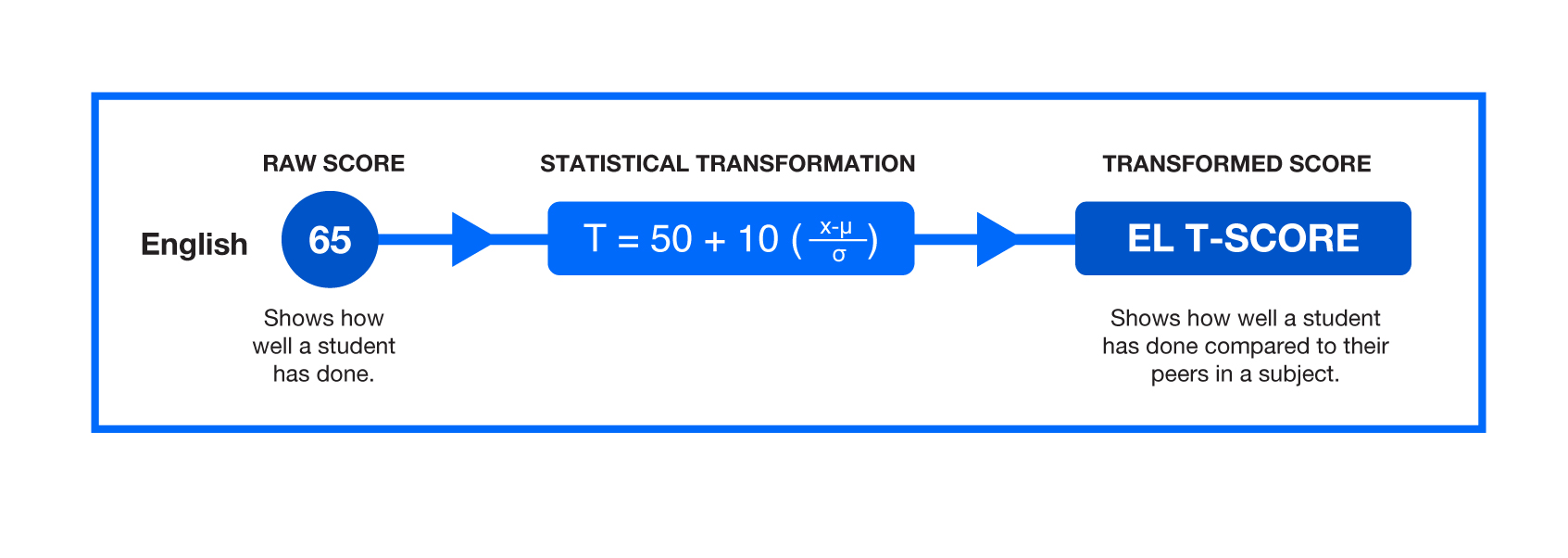Why is MOE changing the PSLE scoring system?
Over the years, we have been fine-tuning the education system to help children discover and develop their strengths and interests, while moving away from an over-emphasis on academic results.
Our PSLE scoring changes aim to achieve this by:
Reducing fine differentiation of students' examination results at a young age
Recognising children's level of achievement, regardless of how their peers have done
T-score
Reflects how well students have done relative to their peers
Over 200 possible T-scores
- Students' examination scores are more finely differentiated, and fewer students will have the same T-score
- Fewer schools with the same cut-off point
- When a student sits for a PSLE paper, their raw score in each subject is computed into a subject T-score using a formula.
- The subject T-score shows how well the student performed relative to their peers in a particular subject.
- The 4 subject T-scores are added to form the T-score Aggregate, which shows how well they did compared to everyone else who sat for the PSLE in the same year.
PSLE Scores using Achievement Levels (from 2021 onwards)
Reflects how well students have done relative to learning objectives of the curriculum
29 possible PSLE Scores
- Students' examination scores are less finely differentiated, and more students will have the same PSLE Score
- More schools with the same cut-off point
- Students have a wider range of schools to choose from depending on their strengths and interests, unique school programmes, and CCAs
Changes to the PSLE Scoring and S1 posting
Find out what this means for your child and how they can make subject and school choices.
Read this list of commonly asked questions and answers on the new PSLE scoring system.
